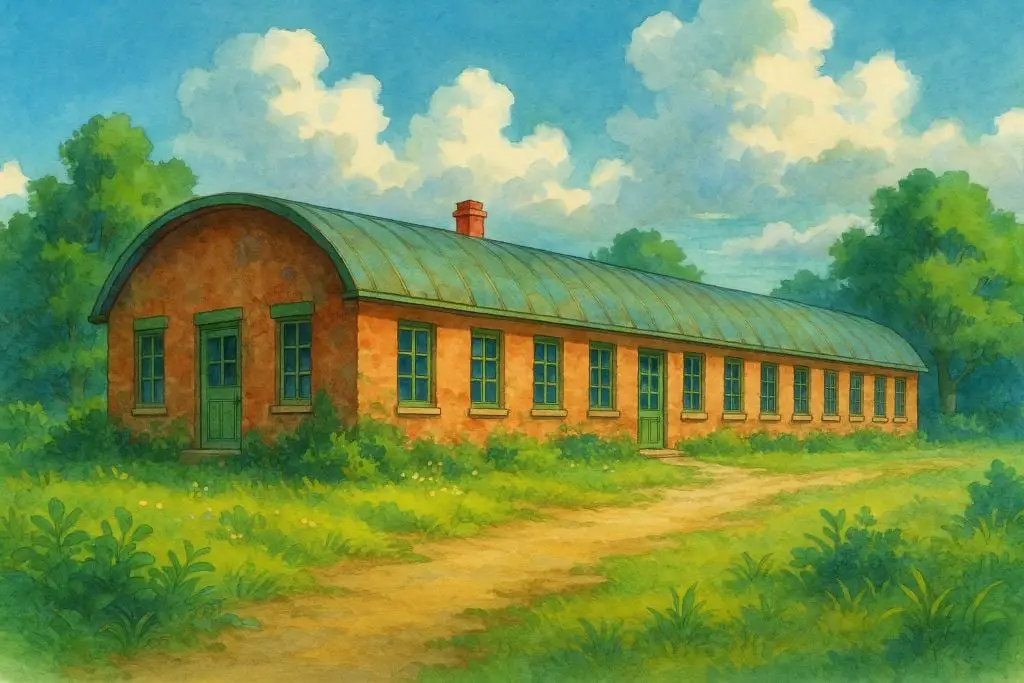
What Is a Barrel Roof?
A barrel roof is a curved roof that resembles the top half of a cylinder or a barrel laid horizontally. Instead of sloping flat planes like a gable roof, a barrel roof has a continuous, smooth arc from one side of the structure to the other. This curvature can span the full width of the building, creating a distinct arched appearance both inside and out.
Barrel roofs are structurally different from gable or hip roofs. They have no ridge or peak. The curved surface runs from one low eave edge to the opposite edge, with the highest point occurring at the center of the arc. Because the arc defines the roof’s shape, framing a barrel roof typically involves curved or segmented supports (like laminated beams or trusses) rather than simple rafters.
Barrel roofs fall into two geometric types: circular and elliptical.
- A circular barrel roof is shaped as the upper portion of a circle. The arc follows the geometry of a circular segment, meaning the curvature is constant. Circular barrel roofs tend to be easier to design and build than elliptical barrel roofs and are often used in applications where simplicity and structural uniformity is important.
- An elliptical barrel roof is shaped as the upper half of a horizontally centered ellipse. The curvature gradually changes from flatter near the eaves to more steeply curved near the center. This profile can be more visually appealing or desirable due to the designer’s ability to control the volume contained by the roof for a given width.
This calculator works for both roof types. When the elliptical mode is selected, it assumes that the roof surface follows the upper half of an ellipse that is horizontally centered across the building’s span. Unless the roof is a true semi-circle with a height that is exactly half the width, this results in a more gradual curve and a slightly different arc length, surface area, and roof volume compared to a circular arc of the same width and height.
Barrel roofs are often used where a clear-span interior is needed, such as gymnasiums, hangars, transit terminals, and warehouses. Their continuous curve helps shed water efficiently, and the arched design can distribute loads evenly, reducing the need for internal supports. Due to the skill and engineering requirements, barrel roofs tend to be more difficult and expensive to build than standard pitched roofs.

